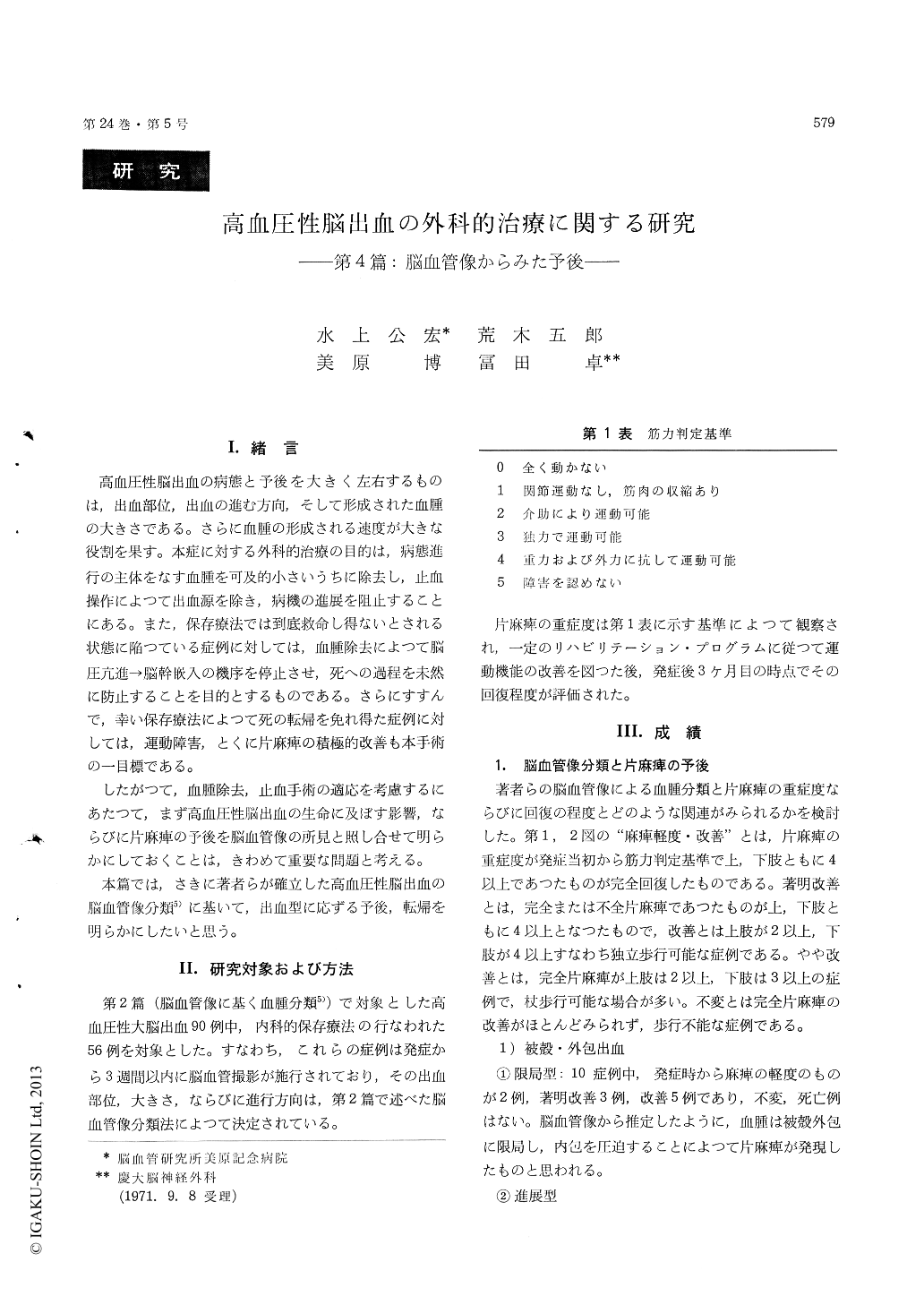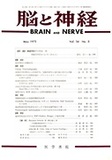Japanese
English
- 有料閲覧
- Abstract 文献概要
- 1ページ目 Look Inside
I.緒言
高血圧性脳出血の病態と予後を大きく左右するものは,出血部位,出血の進む方向,そして形成された血腫の大きさである。さらに血腫の形成される速度が大きな役割を果す。本症に対する外科的治療の目的は,病態進行の主体をなす血腫を可及的小さいうちに除去し,止血操作によつて出血源を除き,病機の進展を阻止することにある。また,保存療法では到底救命し得ないとされる状態に陥つている症例に対しては,血腫除去によつて脳圧亢進→脳幹嵌入の機序を停止させ,死への過程を未然に防止することを目的とするものである。さらにすすんで,幸い保存療法によつて死の転帰を免れ得た症例に対しては,運動障害,とくに片麻痺の積極的改善も本手術の一目標である。
したがつて,血腫除去,止血手術の適応を考慮するにあたつて,まず高血圧性脳出血の生命に及ぼす影響,ならびに片麻痺の予後を脳血管像の所見と照し合せて明らかにしておくことは,きわめて重要な問題と考える。
The prognosis for survival and hemiplegia of 56 cases with hypertensive intracerebral hemorrhage has been analized on the basis of the angiographic classification established by authors.
1) No death occured in cases with the hematoma localized in putamen or thalamus. Recovery of hemiplegia was almost complete in all cases three months after the onset.
2) In cases with hematoma developed from puta-amen or thalamus into the posterior limb of internal capsule, the mortality rates are 6% or 33% res-pectively. As to the prognosis for hemiplegia, re-covery was incomplete in almost cases.
3) In cases with the hematoma developed from putamen or thalamus into the ventricle, the mortality rates were 54% and 100% respectively. Recovery of hemiplegia could not be expected in survival cases.
4) Dividing angiographic findings into 5 grades according to the amount of displacement of anterior cerebral artery and internal cerebral vein, the pro-gnosis for survival was in parallel with these grades in cases with putaminal hemorrhage.
5) Accordingly, these angiographic classification seems to play an important role for the decision on the operative indications.

Copyright © 1972, Igaku-Shoin Ltd. All rights reserved.


